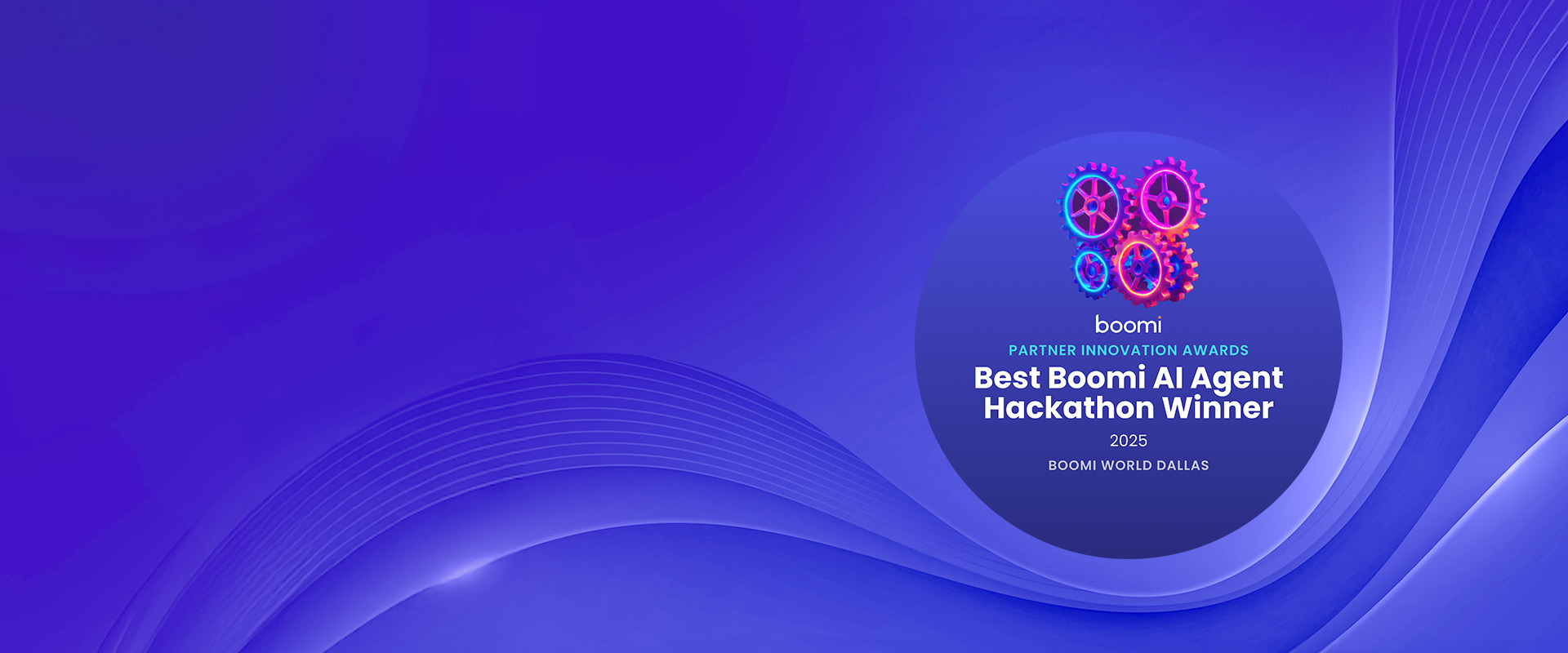Before we discuss how to choose the right integration platform or iPaaS, let’s understand why an organization would need an integration platform. Whether you are a small company with a few applications or a big enterprise organization with various on-premises and cloud applications, you have data flowing through various business applications. You may be on the journey of “digital transformation.” You may be looking for cloud migration or adoption. In all scenarios, your applications must talk to one another. It is essential to have integrations between various applications, whether on-premises, in the cloud, modern, or legacy.
Bottom Line: Connected applications are a necessity for Digital Transformation.
Organizations need to consider integration as a strategic capability to address the unscaled adoption of new applications and enhance their ability to connect everything in this new digital business environment.
Why Do We Need an Integration Platform and Things to Consider when Choosing an iPaaS
Traditionally, organizations use custom coding or write large-scale programs to accomplish Point-to-Point (P2P) connections or stay connected from one application to another. In some scenarios, organizations do a good job with custom development for integrating their small number of applications. Still, custom-coded P2P can become a big headache when organizations grow and deal with large applications. Major issues that can arise with custom-coded P2P solutions are:
- Any changes in Application APIs, JSON / data structure, result in re-development and testing in case of P2P integrations
- P2P integrations quickly become unmanageable, brittle, and damaging to both the IT budget and the organization’s ability to meet current and changing business needs
- P2P integrations result in high development and maintenance costs and poor performance
- Data security can be a big pain area in P2P custom integration
To overcome the pain of custom coding, many product companies have developed Integration Platforms that are ready to use with very little or near-zero coding.
So, the first question to ask yourself is, “When should I look for an integration platform?”
Drivers for iPaaS:
Here are a few drivers who may be relevant to you:
- Alignment with Digital Cloud transformation and adoption strategy
- Ease of use and maintainability
- Reduced TCO (licensing costs) as compared to on-premises solutions
- Ability to handle hybrid/co-existence scenarios
- Cloud-to-Cloud
- On-Premises to Cloud
- On-Premises to On-Premises
- Low-code platform
- Support for various EDI formats and data standards
- Limited infrastructure overhead
- High data security and compliance
- Seamless platform/product upgrades with minimal cost overheads
- Single platform for multiple business needs
- Point-to-point integration (P2P)
- Master Data Management (Data Synchronization)
- API Management
- Workflow Management
If your business strategy or IT needs to fall under any of the drivers mentioned above, you should look for an integration platform!
There are many leading integration platforms on the market, so you may be confused about which is suitable for your organization. I will try to simplify things for you based on my expertise and experience with various iPaaS products.
I suggest making your selection criteria or iPaaS evaluation in 4 main steps:
Step 1: Look out for Core Features/Desired Capabilities
There are several features you should look for in an integration platform. An integration platform as a service, or iPaaS, should have the following desired capabilities or core features:
- Pre-built generic connectors / Adaptors (HTTP, FTP, SMTP, REST, SOAP, Web Server, Database, OData, etc.)
- Application connectors/adapters for SaaS and on-premises packaged applications (Salesforce, Oracle, NetSuite, SuccessFactors, Workday, SAP, Coupa, etc.)
- Supported Data formats (XML, JSON, Flat File, etc.)
- Supported Data standards (EDIFACT, HL7, SWIFT, etc.)
- Real-Time and Batch processing capabilities
- Support for API Authentication and Authorization
- API Life cycle management
- Data mapping and transformation (ETL) capabilities as box features
- Mapping suggests/recommendation engine
- Bulk data processing
- CI/CD integration capabilities
- Custom Connector development kit or SDK
- Routing and orchestration
- Integration flow development and life cycle management tools
- Integration flow operational monitoring and management
- Full life cycle API management
- Data synchronization or MDM capabilities (On a need basis)
- Trading Partners integration
- Dashboard and Reporting
Step 2: Comparison among Various iPaaS Middleware Implementations
Once you have shortlisted a few integration platforms or iPaaS based on generic capabilities, it’s time to compare each platform and narrow it down further. Various parameters can help you compare platforms. The important parameters are:
- Architecture — You should check whether the integration platform has a multi-tenant architecture. Multi-tenant architecture should be more robust and consistent across all users/customers of a particular production company. With a multi-tenant architecture, you will ensure that you use a single version of the integration platform for all users or organizations, or that each uses the integration platform as a service (iPaaS) for their specific needs.
- Ease of Use and Skillset Dependency — You should evaluate how easy it is to implement the IPaaS middleware for an integration platform. It would be best if you went with a platform that requires no coding, so you won’t need to hire a dedicated, high-cost team to implement and maintain your integrations. Nowadays, most iPaaS come with a drag-and-drop UI experience. It will help reduce iPaaS Middleware Implementation time and accelerate time-to-market. It can help in your overall TCO for development and maintenance.
- Addressing Complex Requirements: You should evaluate the out-of-the-box features for ETL/data transformation capabilities. You should be looking for out-of-the-box functions and business rules for complex data transformation so that you won’t need to write complex code.
- AI Capabilities: Most integration platforms undergo frequent upgrades. Product companies might add new features (such as new connectors or security upgrades) during the upgrade or fix any prior issues. You should look for an integration platform with a record of minimal to zero impact on existing integrations. A poor selection will result in extensive re-engineering during platform upgrades.
- Data Security- When using an integration platform, ensure that your data or critical information is not flowing through the Cloud, and that the platform complies with security standards.
- High-Volume Data Processing — One of the most important parameters you should look for is the capability of an integration platform to process high-volume data in seconds. The integration platform should support batch processing and should be able to handle very high-volume requests.
- Licensing Costs- Various integration product companies offer various licensing models and pricing. The pricing may be based on connectors, CPU usage, data volume, etc. I would recommend connector-based pricing, as it will not limit your CPU usage. You should do your due diligence on how many applications you will integrate and the many connectors you need. Compare costs across various iPaaS Middleware implementations. You should ensure you have unlimited record processing capabilities and no constraints on data volume.
- Case Studies — It’s always good to review each shortlisted iPaaS Middleware Implementation or integration platform’s case studies. You should evaluate which iPaaS or integration platform is used by reputed organizations, organizations in your business domain, and organizations with similar or the same type of applications you have.
- Product Roadmap — It’s always a good idea to research the product roadmap. There are many iPaaS Middleware Implementation products on the market, and you should ensure that the product you choose has a strong future roadmap.
Step 3: Proof of Concept (PoC)
You would have very few —maybe 2-3 —shortlisted iPaaS or integration platforms at this stage. This is the right time to conduct a Proof of Concept (PoC) on the shortlisted platform that aligns with your critical use cases. During the PoC, you should look deeper into the integration platform capabilities. You should know which platform is easier to implement and which best supports your needs. A PoC for the same use cases across the shortlisted platforms is always good. It will help in an unbiased comparison and make the right decision.
Step 4: Get a Recommendation from System Integrator
Get in touch with a product-agnostic System Implementation Partner like Jade Global for unbiased recommendations. Ask for their case studies and expertise on various iPaaS Middleware Implementations.
About Jade Global’s Integration Practice
Jade Global, a Certified System Integrator Partner of leading Integration Platforms, specializes in implementing enterprise-grade solutions for all integration needs, including A2A, EAI, EDI, B2B, ETL, MDM, and API management. We specialize in implementing multiple middleware systems, including Boomi, Jitterbit, MuleSoft, Oracle Integration Cloud, Oracle SOA, TIBCO, and others, tailored to the organization’s IT and business needs. Our Integration Practice provides the flexibility to integrate Cloud and on-premises applications, delivering faster time-to-value, increased efficiency, and simplified reporting.
Download datasheet: Cloud Integration and Pass













